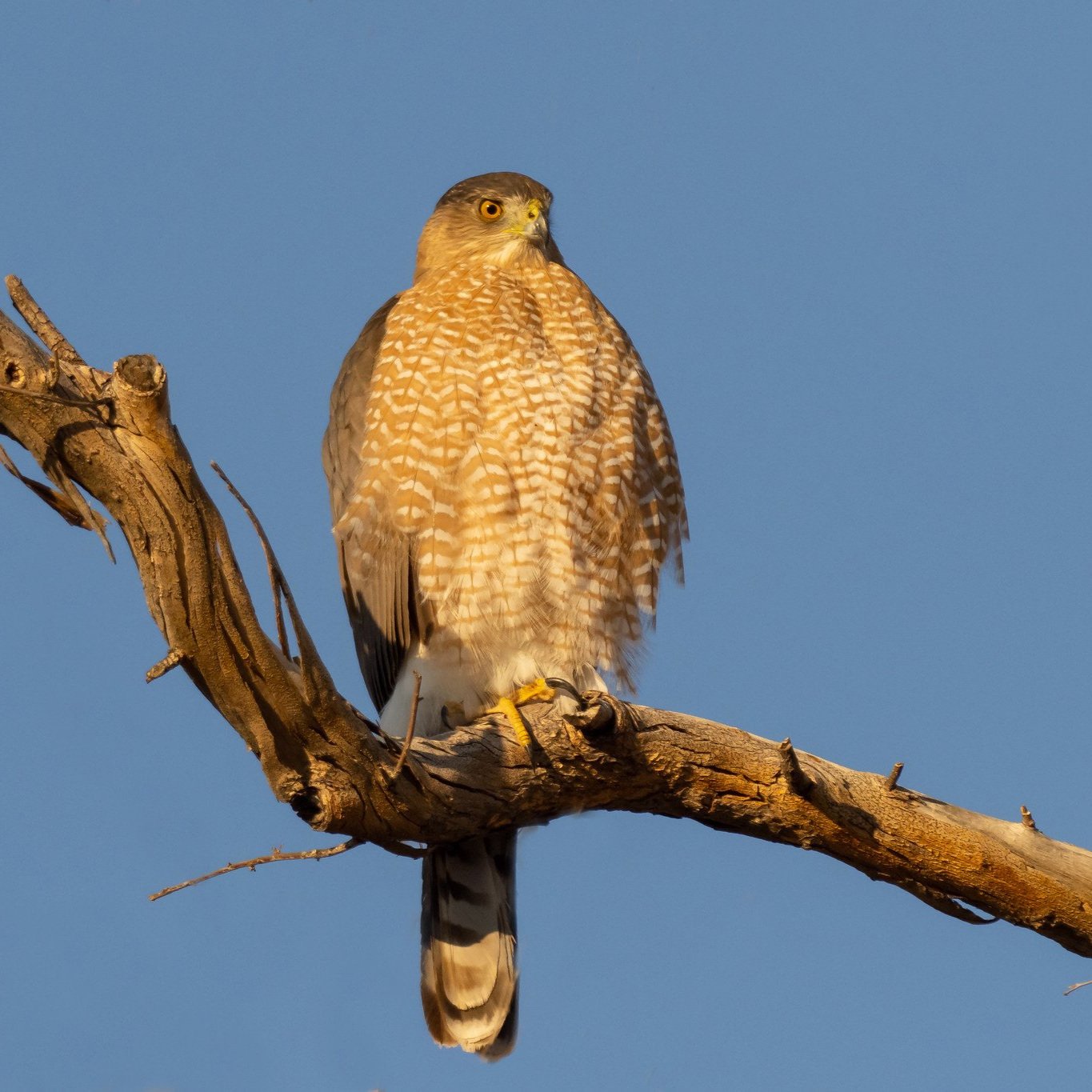Without the attractant of bird feeders in suburban areas, the Sharp-shinned Hawk might be a much rarer sight. As it stands, the bird is occasionally seen at feeders, but it’s not there for the bird feed. Instead, it’s songbirds that feed the Sharp-shinned Hawk, making up 90% of its diet. Objectively, this hawk can be fun to watch as it ambushes its prey on the wing, twisting and turning, flapping, contorting, and diving.
The Sharp-shinned Hawk is much smaller than the Cooper’s Hawk. Both birds are of the genus Accipiter and can be difficult to tell apart, but look for a blocky head on the Cooper’s versus a smaller more rounded head on Sharp-shinned Hawks. It’s also useful to look at the tail–it’s rounded on the Cooper’s Hawk while it’s squared off or sometimes notched on the Sharp-shinned. Both birds generally breed in forest environments, and thus are adapted to this environment with short wings and long tails; perfect for precarious turns in tight forest quarters.
Sharp-shinned Hawk — head comparison, photo by Alexandra MacKenzie FCC
Sharp-shinned Hawk — tail comparison, photo by Harry Fink FCC
Cooper’s Hawk — head comparison, photo by USFWS Midwest
Cooper’s Hawk — tail comparison, photo by Mick Thompson
Sharp-shinned Hawks breed in Wisconsin forests with increasing frequency the farther north one goes. Dense conifer forests of the north are typical haunts of Sharp-shinned Hawks, though they’re very reclusive and hard to find while on a nest. The birds more than make up for their secrecy during the breeding season with massive migratory pushes in fall, where they are often the most counted birds at stations like Hawk Ridge in Duluth, Minnesota where over 22,000 birds were counted in 2016.
You might be able to find a Sharp-shinned Hawk at Faville Grove hunting songbirds. Just the other day I saw a sharpie chase some House Sparrows around the shed by my house. It flapped and harassed the birds under the eaves, making multiple stabs at the shed but appearing to end up unsuccessful, eventually gliding to the east across the prairie.
Written by Drew Harry, Faville Grove Sanctuary land steward
Cover photo by Mick Thompson









